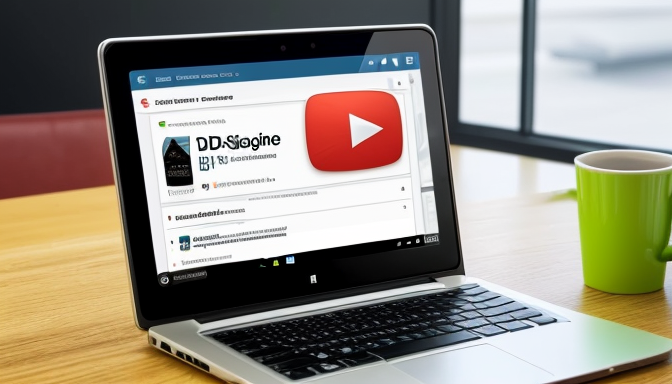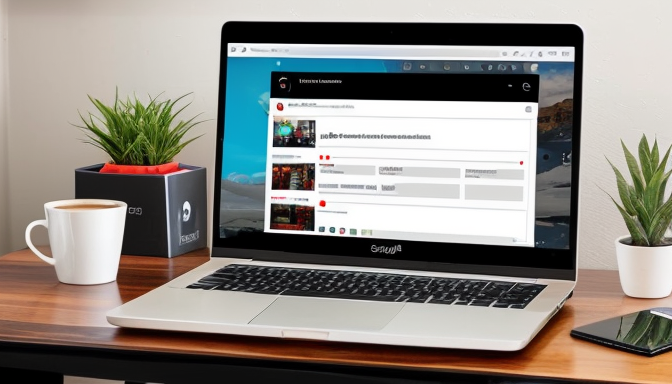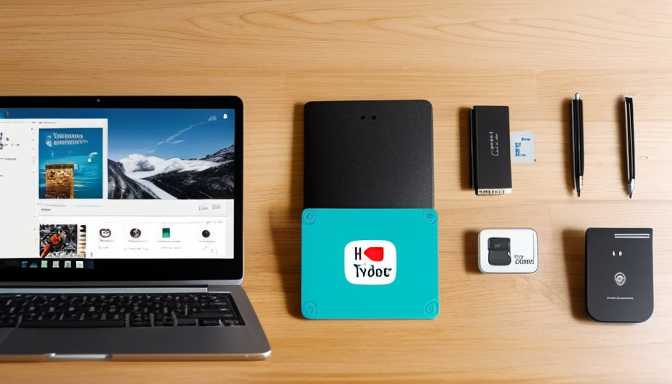This article serves as a comprehensive guide on how to download YouTube videos directly to your SD card. This method ensures safe storage and easy access for offline viewing, making it a valuable resource for anyone looking to enhance their video experience.
Why Download YouTube Videos?
Downloading YouTube videos offers numerous benefits. Firstly, it allows users to watch their favorite content without the need for an internet connection, which is particularly useful when traveling or in areas with limited connectivity. Additionally, downloading videos can help save on data usage, as you can watch the video multiple times without consuming internet bandwidth.
Legal Considerations for Downloading Videos
Before proceeding with downloads, it’s crucial to understand the legal implications associated with downloading videos from YouTube. Many videos are protected by copyright, and downloading them without permission may violate these laws. Always check the video’s licensing and ensure you have the right to download and use the content.
Best Tools for Downloading YouTube Videos
There are several tools available for downloading YouTube videos. Below are some of the most reliable options:
- Online Video Downloaders: These platforms allow users to download videos quickly without needing to install any software. However, their reliability can vary.
- Software Applications: Dedicated applications often provide advanced features such as batch downloads and format conversion, making them ideal for frequent users.
How to Choose the Right SD Card
Selecting the appropriate SD card is essential for storing downloaded videos. Consider the following factors:
- Storage Capacity: Choose an SD card with ample storage to accommodate multiple videos.
- Speed Class Ratings: Higher speed ratings ensure quicker read and write times, which is important for smooth playback.
Step-by-Step Guide to Downloading Videos
To download YouTube videos to your SD card, follow these steps:
- Using Online Downloaders: Navigate to a trusted online downloader, paste the video URL, and select the option to save it directly to your SD card.
- Using Software Applications: Install a reliable video downloader, input the video URL, and choose the SD card as the destination for the downloaded file.
Managing Your Downloaded Videos
Once your videos are downloaded, managing them effectively is key:
- Creating Folders for Organization: Organize your videos into folders based on categories or genres to make them easier to find.
- Regular Backups: Regularly back up your videos to prevent loss due to SD card failure or accidental deletion.
Conclusion: Enjoy Your Downloads Responsibly
In conclusion, downloading YouTube videos to your SD card can greatly enhance your viewing experience. However, it is important to do so legally and responsibly, ensuring that you respect copyright laws while enjoying offline content.

Why Download YouTube Videos?
In today’s digital age, the ability to download YouTube videos has become increasingly popular among users. Understanding the benefits of downloading these videos can significantly enhance your overall viewing experience. Here are some key reasons why you might consider downloading videos from YouTube:
- Offline Access: One of the most significant advantages of downloading YouTube videos is the ability to watch them offline. This feature is particularly beneficial when you are traveling, in areas with poor internet connectivity, or simply want to save on data usage.
- Data Savings: Streaming videos can consume a large amount of data, especially when watching in high definition. By downloading videos, you can save your mobile data and avoid unexpected charges from your service provider.
- Convenience: Having your favorite videos readily available on your device allows for quick access without the need for an internet connection. This convenience is especially useful for educational content or tutorials that you may want to reference repeatedly.
- Content Preservation: Sometimes, videos on YouTube may be removed or made private by the uploader. By downloading videos, you ensure that you have a copy of the content you enjoy, preserving it for future viewing.
- Enhanced Viewing Options: Downloading videos allows you to choose the quality and format that best suits your device. This flexibility can improve playback performance and overall enjoyment.
Additionally, downloading videos opens up the potential for creating personalized playlists or collections. You can curate your favorite content, making it easier to find and enjoy without having to search through YouTube each time.
However, while the benefits are clear, it is essential to consider the legal implications of downloading content. Always ensure that you have the right to download the videos you are interested in, as copyright laws vary by region and content type.
In conclusion, downloading YouTube videos can greatly enhance your viewing experience by providing offline access, saving data, and allowing for greater convenience. By understanding these benefits, you can make informed decisions about how and when to download videos for your personal use.

Legal Considerations for Downloading Videos
When considering the downloading of videos from YouTube, it is essential to understand the legal implications and copyright issues that may arise. YouTube’s terms of service explicitly state that users are not allowed to download content unless a download button or link is provided by YouTube itself. This means that any unauthorized downloading of videos can lead to legal repercussions.
Many users may not be aware that the content on YouTube is protected by copyright law. This law gives the original creators exclusive rights to their work, preventing others from copying, distributing, or modifying it without permission. Downloading videos without the owner’s consent can be considered a violation of these rights, and may result in a copyright infringement claim.
Furthermore, it is important to note that even if a video is publicly accessible on YouTube, this does not grant users the right to download it. Public access does not equate to public domain. Therefore, users should always consider whether they have the necessary permissions before proceeding with any downloads.
In addition to copyright concerns, users should be aware of the potential risks associated with downloading videos from third-party sites or applications. These platforms may not only violate YouTube’s terms of service but could also expose users to malware or other security threats. It is advisable to use reputable tools that comply with legal standards and respect copyright regulations.
For educational purposes, some exceptions exist under the doctrine of fair use, which allows limited use of copyrighted material without permission under specific circumstances. However, these exceptions are often complex and subject to interpretation, making it crucial for users to seek legal advice if they are unsure whether their intended use qualifies as fair use.
To summarize, before downloading videos from YouTube, users must be fully informed about the legal implications involved. Understanding copyright laws, YouTube’s terms of service, and the risks associated with unauthorized downloads can help users make informed decisions. By respecting the rights of content creators and adhering to legal guidelines, users can enjoy content responsibly while avoiding potential legal issues.
In conclusion, always prioritize legality and ethics when considering video downloads from YouTube. By doing so, you not only protect yourself from legal consequences but also support the creators who work hard to produce the content you enjoy.

Best Tools for Downloading YouTube Videos
In today’s digital age, downloading YouTube videos has become increasingly popular. Whether you want to watch your favorite content offline or save tutorials for later, having the right tools is essential. This section explores the best tools available for downloading YouTube videos, focusing on reliability and user-friendliness.
- Online Video Downloaders: These are web-based services that allow users to download videos without the need for software installation. They are typically easy to use and accessible from any device with an internet connection. Popular options include:
- Y2Mate: Known for its straightforward interface, Y2Mate supports various video formats and resolutions, making it a favorite among users.
- SaveFrom.net: This tool provides quick downloads and allows users to paste the video URL directly into the site.
- ClipConverter.cc: Offering advanced features like format conversion, ClipConverter is ideal for users who want to customize their downloads.
- Software Applications: For those seeking more robust features, dedicated software applications provide advanced functionalities such as batch downloads, format conversion, and higher download speeds. Some notable software options include:
- 4K Video Downloader: This application allows users to download entire playlists and channels, making it a powerful tool for avid YouTube watchers.
- Freemake Video Downloader: With its user-friendly interface, this software supports a wide range of formats and offers options for downloading subtitles.
- JDownloader: A popular choice for tech-savvy users, JDownloader supports multiple file downloads simultaneously and has a robust plugin system.
- Browser Extensions: For quick access, browser extensions can be a convenient option. Extensions like Video DownloadHelper for Firefox and Chrome allow users to download videos directly from their browser with just a few clicks.
When choosing a tool to download YouTube videos, consider factors such as ease of use, download speed, and format options. It’s also essential to ensure that the tool you select complies with YouTube’s terms of service to avoid any legal issues.
In conclusion, the right tools can significantly enhance your experience when downloading YouTube videos. Whether you opt for online downloaders, software applications, or browser extensions, make sure to choose a solution that fits your needs and preferences.
Online Video Downloaders
have gained popularity as a convenient solution for users looking to download videos from platforms like YouTube without the need for installing any software. These web-based tools offer a quick and often free alternative to traditional software applications. However, the effectiveness and reliability of these downloaders can vary significantly, making it essential to choose wisely.
One of the primary advantages of using online video downloaders is their accessibility. Users can simply visit a website, paste the video URL, and initiate the download process. This ease of use is particularly appealing for those who may not have the technical expertise to navigate software installations. Additionally, many online downloaders support a variety of video formats, allowing users to choose the best option for their needs.
However, not all online video downloaders are created equal. Some may have limitations, such as file size restrictions, slow download speeds, or a lack of support for certain video resolutions. Moreover, the reliability of these services can be questionable; users may encounter broken links or sites that frequently go offline. Therefore, it’s crucial to conduct research to find reputable online downloaders that consistently deliver quality results.
Another important consideration is the legal implications of downloading videos. While many online downloaders are technically capable of saving videos, users must ensure they are complying with copyright laws. Downloading content without permission can lead to legal repercussions, so it’s advisable to familiarize oneself with the terms of service of the video platform and the downloader being used.
| Pros of Online Video Downloaders | Cons of Online Video Downloaders |
|---|---|
| Easy to use | Variable reliability |
| No software installation required | Potential legal issues |
| Supports multiple formats | Possible download limits |
In conclusion, online video downloaders offer a quick and convenient way to download videos, but users should approach them with caution. By selecting a reliable service and being mindful of legal considerations, users can enjoy their downloaded content without complications. Ultimately, conducting thorough research and reading user reviews can help in identifying the best online video downloader that meets individual needs.
Software Applications
have revolutionized the way we download videos from platforms like YouTube. These dedicated tools not only simplify the process but also offer a range of advanced features that enhance the user experience. One of the standout benefits of using software applications is the ability to perform batch downloads. This feature allows users to download multiple videos simultaneously, saving time and effort compared to downloading each video individually.
In addition to batch downloads, many software applications provide options for format conversion. Users can select their preferred video format, whether it be MP4, AVI, or MKV, ensuring compatibility with various devices. This flexibility is particularly beneficial for those who wish to play videos on different platforms, such as smartphones, tablets, or smart TVs.
Another important aspect of dedicated software applications is their user-friendly interfaces. Most applications are designed with simplicity in mind, allowing even those with minimal technical knowledge to navigate easily. Features like drag-and-drop functionality and intuitive menus make the downloading process straightforward and accessible.
Furthermore, many software applications come equipped with additional functionalities, such as video editing tools. Users can trim, cut, or merge videos before saving them, offering a customizable viewing experience. This is especially useful for content creators who want to curate their video libraries or for users who wish to create compilations.
Another significant advantage of using dedicated software is the download speed. Unlike online downloaders, which may be limited by internet speed or server capacity, software applications can utilize multiple connections to enhance download speeds. This means users can enjoy their favorite videos without long waiting times.
Security is also a key consideration. Many software applications offer built-in protection against malware and viruses, ensuring that the downloading process is safe. Users can download videos with peace of mind, knowing that their systems are protected from potential threats.
In conclusion, dedicated software applications provide a comprehensive solution for downloading videos from YouTube and other platforms. With features such as batch downloads, format conversion, user-friendly interfaces, and enhanced security, these tools are invaluable for anyone looking to build a personal video library. As technology continues to evolve, the capabilities of these applications are likely to expand, offering even more options for users.

How to Choose the Right SD Card
When it comes to downloading and storing videos, selecting the right SD card is crucial. The right SD card not only ensures that your videos are stored safely but also guarantees smooth playback and quick access. Here are the key factors to consider when choosing an SD card:
- Storage Capacity: The storage capacity of an SD card is one of the most important factors to consider. SD cards come in various capacities, typically ranging from 2GB to 1TB. If you plan to download numerous videos, it’s advisable to choose a card with a larger capacity. For example:
- Speed Class Ratings: The speed class of an SD card is another essential aspect that affects video performance. Speed class ratings indicate how quickly data can be written to and read from the card. Look for cards with a minimum of Class 10 or UHS (Ultra High Speed) ratings for optimal video playback.
- Card Type: There are different types of SD cards, including SD, SDHC, and SDXC. SDHC cards support capacities from 4GB to 32GB, while SDXC cards can hold 32GB to 2TB. Ensure that your device is compatible with the type of card you choose.
- Reliability and Brand: Not all SD cards are created equal. It’s advisable to choose cards from reputable brands known for their reliability and durability. Look for user reviews and expert recommendations to guide your choice.
| Storage Size | Approximate Video Hours |
|---|---|
| 16GB | Up to 4 hours |
| 64GB | Up to 16 hours |
| 128GB | Up to 32 hours |
In conclusion, selecting the right SD card involves considering storage capacity, speed class ratings, card type, and brand reliability. By paying attention to these factors, you can ensure that your videos are stored efficiently and can be accessed without any issues.
Storage Capacity
Understanding different storage capacities is crucial when it comes to selecting the right SD card for downloading multiple videos. With the increasing popularity of video content, many users find themselves wanting to save their favorite YouTube videos for offline viewing. However, the choice of SD card can significantly impact your storage capabilities and overall experience.
When considering , it is essential to know the different options available. SD cards come in various sizes, typically ranging from 2GB to 1TB or more. The capacity you choose should be based on your personal needs and how many videos you plan to download. For instance, if you are an occasional viewer who only downloads a few videos, a card with 16GB or 32GB might suffice. However, if you regularly download high-definition content, you may want to consider a card with a larger capacity, such as 128GB or 256GB.
Another factor to consider is the file size of the videos you intend to download. YouTube videos can vary greatly in size depending on their length and quality. For example, a standard definition video may take up around 500MB for a full movie, while a high-definition video can easily exceed 2GB or more. Therefore, understanding the average size of the videos you wish to store will help you make a more informed decision regarding the storage capacity of your SD card.
Moreover, it is important to account for additional files you may want to store on the same card. This could include music, photos, or other types of media. If you plan to use the SD card for multiple purposes, opting for a larger capacity can provide the flexibility you need without the hassle of constantly managing space.
In summary, selecting the right storage capacity for your SD card is vital for a seamless video downloading experience. By considering the number of videos you want to download, their file sizes, and any additional files you may want to save, you can choose an SD card that meets your needs effectively. Remember, investing in a card with adequate storage will not only enhance your viewing experience but also provide peace of mind knowing that you have ample space for your favorite content.
Speed Class Ratings
The speed class rating of an SD card is a crucial factor that directly influences the performance of video playback and recording. When it comes to downloading and storing videos, especially from platforms like YouTube, understanding these ratings is essential for ensuring a smooth experience.
SD cards are categorized into different speed classes, which indicate the minimum write speeds necessary for various applications. These ratings are particularly important for tasks that require high data transfer rates, such as recording high-definition videos or playing back large video files. The most common speed classes include:
- Class 2: Minimum write speed of 2 MB/s. Suitable for standard definition video recording.
- Class 4: Minimum write speed of 4 MB/s. Suitable for 720p HD video recording.
- Class 6: Minimum write speed of 6 MB/s. Suitable for 1080p full HD video recording.
- Class 10: Minimum write speed of 10 MB/s. Ideal for full HD video recording and high-resolution photography.
In addition to these basic classes, there are also UHS (Ultra High Speed) ratings that offer even higher performance levels:
- UHS-I: Minimum write speed of 10 MB/s, supporting full HD and 4K video.
- UHS-II: Minimum write speed of 30 MB/s, designed for professional-grade video recording and fast data transfers.
When choosing an SD card for downloading YouTube videos, it is essential to consider the speed class rating. A card with a higher speed class will ensure that videos are written quickly and can be read without lag, which is particularly important for high-definition content. If the speed class is too low, you may experience issues such as buffering during playback or dropped frames when recording.
Furthermore, it is worth noting that the speed class rating is not the only factor to consider. The storage capacity of the card is equally important, as it determines how many videos you can store without running out of space. Therefore, always look for a balance between speed class and storage capacity to meet your specific needs.
In summary, understanding the of SD cards is vital for optimizing your video downloading and playback experience. Always choose a card that matches the demands of your video content to ensure seamless performance.

Step-by-Step Guide to Downloading Videos
Downloading videos from YouTube directly to your SD card can be a straightforward process if you follow the right steps. This guide will walk you through the entire process, ensuring you can enjoy your favorite videos offline with ease.
Step 1: Choose Your Tool
Before you begin, you must select a reliable tool for downloading videos. There are two primary options:
- Online Downloaders: These are web-based tools that allow you to paste the URL of the video you want to download. They are convenient and require no installation.
- Software Applications: These programs can be downloaded and installed on your computer. They often provide more features, such as batch downloads and format conversion.
Step 2: Locate the Video URL
Go to YouTube and find the video you wish to download. Click on the address bar of your browser and copy the URL of the video. This link is essential for the downloading process.
Step 3: Using Online Downloaders
If you opted for an online downloader, follow these steps:
- Open your chosen online video downloader in your web browser.
- Paste the copied URL into the designated field on the downloader’s website.
- Select the desired video quality and format.
- Click the Download button, and the video will be processed.
- Once the download is complete, save the video directly to your SD card by selecting it as the destination.
Step 4: Using Software Applications
If you prefer using software applications, the steps are slightly different:
- Install the software on your computer and launch it.
- Paste the copied YouTube URL into the program’s input field.
- Choose your preferred video format and quality from the options provided.
- Select your SD card as the storage destination.
- Click on the Download button to start the downloading process.
Step 5: Verify Your Download
Once the download is complete, navigate to your SD card and check if the video file is there. Ensure that the file plays correctly on your device.
Conclusion
By following these steps, you can easily download YouTube videos to your SD card for offline viewing. Always remember to respect copyright laws and download videos responsibly. Enjoy your offline content!
Using Online Downloaders
In the digital age, the ability to download videos from platforms like YouTube has become increasingly valuable. Online downloaders offer a straightforward way to save these videos directly to your SD card without the need for complicated software installations. Here’s how to effectively utilize these tools.
- Choose a Reliable Online Downloader: Start by selecting a trustworthy online downloader. Popular options include Y2Mate, SaveFrom.net, and ClipConverter. These platforms are known for their user-friendly interfaces and reliable performance.
- Copy the Video URL: Navigate to the video you wish to download on YouTube. Copy the URL from the address bar. This link is essential for the downloader to access the video.
- Paste the URL: Open the online downloader in your web browser. You will typically find a designated field to paste the copied URL. After pasting, click on the download or convert button.
- Select the Desired Format: Most online downloaders allow you to choose the format in which you want to save the video. Common options include MP4, AVI, or even audio formats like MP3. Select the format that best suits your needs.
- Download the Video: After selecting the format, the downloader will process the video. Once ready, a download link will appear. Click on this link to initiate the download.
- Save to SD Card: When prompted to choose a location, select your SD card. Ensure that your SD card is properly connected to your device and has enough storage space. This step is crucial for storing your downloaded videos safely.
By following these steps, you can easily save your favorite videos directly to your SD card using online downloaders. This method not only saves time but also provides a convenient way to access your videos offline.
Tips for Successful Downloads:
- Ensure a stable internet connection to avoid interruptions during the download process.
- Regularly check for updates or changes in the downloader’s functionality, as some may alter their services.
- Be mindful of copyright regulations and only download content that is permissible to avoid legal issues.
In conclusion, utilizing online downloaders is an effective method for saving videos to your SD card. With the right tools and a few simple steps, you can enjoy your favorite content offline, anytime and anywhere.
Using Software Applications
Downloading videos from YouTube can be a straightforward process when utilizing dedicated software applications. These tools are designed to enhance the user experience, providing a range of features that online downloaders may lack. Below, we will explore the step-by-step process of downloading videos using software applications, ensuring a smooth and efficient experience.
- Choose the Right Software: Start by selecting a reliable software application that suits your needs. Popular options include 4K Video Downloader, YTD Video Downloader, and Freemake Video Downloader. Each of these applications offers unique features such as batch downloading, format conversion, and high-definition video support.
- Install the Application: Once you have chosen your software, download and install it on your device. Follow the installation prompts to ensure that the application is set up correctly. Most applications are user-friendly and provide a straightforward installation process.
- Copy the Video URL: Navigate to YouTube and find the video you wish to download. Copy the URL from the address bar. This link is crucial as it directs the software to the specific video you want to save.
- Open the Software: Launch the downloaded application. You will typically find a designated area within the software to paste the URL you copied earlier.
- Paste the URL: In the application, look for a button that says ‘Paste Link’ or similar. Click on it, and the software will analyze the video link. This process may take a few moments, depending on the software and the video’s length.
- Select Download Options: After the analysis, you will usually be presented with various download options, including video quality and format. Choose the desired resolution and format that best suits your needs. For instance, if you plan to watch the video on a mobile device, selecting a lower resolution might be beneficial for saving space.
- Choose the Destination: Before downloading, ensure that you specify the destination folder where you want the video to be saved. If you intend to save it directly to your SD card, make sure to navigate to that location in the file browser.
- Start the Download: Click on the ‘Download’ button to begin the process. The software will begin downloading the video, and you can monitor the progress through a status bar.
- Access Your Downloaded Video: Once the download is complete, navigate to the folder you selected earlier to find your video. You can now enjoy watching it offline at your convenience.
Using software applications for downloading videos not only simplifies the process but also enhances your overall experience by offering advanced features that cater to various user needs. By following these steps, you can easily download and manage your favorite videos from YouTube.

Managing Your Downloaded Videos
Once you’ve successfully downloaded your favorite videos from YouTube to your SD card, the next crucial step is effective management of these files. Proper management ensures that you can easily access, organize, and enjoy your videos without any hassle. Here are some essential tips to help you manage your downloaded videos efficiently.
One of the best practices for managing your video files is to create dedicated folders for different categories. This could be based on genres, themes, or even the source of the videos. For example:
- Music Videos
- Documentaries
- Vlogs
- Tutorials
By organizing your videos into specific folders, you can significantly enhance accessibility. Instead of scrolling through a long list of files, you can quickly navigate to the folder that contains the content you want to watch. This not only saves time but also keeps your SD card clutter-free.
Another critical aspect of video management is regular backups. It’s essential to back up your downloaded videos to prevent loss due to SD card failure, accidental deletion, or corruption. You can use cloud storage services or an external hard drive for this purpose. Here’s a simple backup strategy:
1. Choose a reliable cloud storage service (e.g., Google Drive, Dropbox).2. Set a schedule for regular backups (e.g., weekly or monthly).3. Ensure that your backup files are organized similarly to your SD card for easy retrieval.
By following this strategy, you can have peace of mind knowing that your valuable video content is safe and secure.
Over time, you may accumulate videos that you no longer wish to keep. Regularly reviewing and deleting unwanted videos can help free up space on your SD card. Consider the following when deciding what to delete:
- Videos you’ve already watched and no longer need
- Duplicate files
- Outdated content that no longer interests you
By keeping only the videos that matter to you, you can maintain an organized library that’s easy to navigate.
Conclusion: Proper management of your downloaded videos is essential for a seamless viewing experience. By creating organized folders, performing regular backups, and deleting unwanted content, you can ensure that your video library remains accessible and enjoyable. Take the time to implement these strategies, and you’ll find that managing your videos becomes a straightforward and rewarding task.
Creating Folders for Organization
When it comes to managing your downloaded videos, organization is key. By creating folders on your SD card, you can significantly enhance accessibility and keep your storage space clutter-free. Here’s how to effectively organize your video files:
- Establish a Folder Structure: Start by determining a logical folder structure. You can create folders based on categories such as genres (e.g., music, tutorials, vlogs), date (e.g., 2023, 2024), or projects (e.g., vacation videos, educational content). This will make it easier to locate specific videos later.
- Use Descriptive Names: When naming your folders, use descriptive titles that clearly indicate the content. For example, instead of naming a folder “Videos,” consider “Travel Vlogs 2023” or “Cooking Tutorials.” This clarity will help you navigate your SD card more efficiently.
- Regularly Update Your Organization: As you download more videos, take the time to regularly update your folder structure. This could mean creating new folders for new genres or deleting old ones that are no longer relevant. Keeping your organization system current ensures that it remains effective.
- Utilize Subfolders: For extensive collections, consider using subfolders within your main folders. For example, within a “Music” folder, you might create subfolders for different artists or albums. This extra layer of organization can simplify your search process.
- Implement a Naming Convention: Adopting a consistent naming convention for your video files can also aid in organization. You might include the date of download, the content type, or a brief description in the file name (e.g., “2023-09-15_Cooking_Italian_Pasta.mp4”).
By following these organizational strategies, you can ensure that your downloaded videos are not only easy to find but also well-kept. A well-organized SD card not only saves time but also enhances your overall viewing experience, allowing you to focus on enjoying your content rather than searching for it.
In conclusion, taking the time to create a structured folder system for your videos will pay off in the long run. With a little effort, you can maintain a clutter-free SD card that provides quick access to all your favorite videos.
Regular Backups
In the digital age, the importance of regularly backing up your downloaded videos cannot be overstated. Many users often overlook this crucial step, assuming that their content is safe on their SD cards. However, there are various risks associated with storing videos on a single device, including SD card failure and the possibility of accidental deletion.
To ensure that your precious videos are protected, it is essential to create a systematic backup routine. This not only safeguards your content but also provides peace of mind, knowing that you have multiple copies of your favorite media. Here are some best practices for effective video backups:
- Use Multiple Storage Locations: Consider backing up your videos on different platforms. This could include external hard drives, cloud storage services, or even another SD card. By diversifying your storage methods, you mitigate the risk of losing all your videos due to a single point of failure.
- Schedule Regular Backups: Set a specific time each week or month to back up your videos. This could be as simple as connecting your SD card to your computer and transferring the files to your chosen storage location. Consistency is key in ensuring that your backups are up-to-date.
- Utilize Backup Software: There are numerous software applications available that can automate the backup process. These tools can help you schedule backups and ensure that all new videos are included without requiring manual effort.
- Check Backup Integrity: It’s not enough to just create backups; you must also verify that they are functioning correctly. Regularly check your backup files to ensure they are not corrupted and can be accessed easily when needed.
Additionally, consider the format of your backups. Storing videos in widely accepted formats ensures compatibility across different devices and platforms, making it easier to access your content when needed.
In conclusion, of your downloaded videos are a vital part of digital content management. By implementing a consistent backup strategy, utilizing various storage methods, and regularly verifying your backups, you can protect your videos from unforeseen circumstances. This proactive approach not only secures your content but also enhances your overall viewing experience.

Conclusion: Enjoy Your Downloads Responsibly
In today’s digital age, the ability to download YouTube videos directly to your SD card has become a valuable skill for many users. This practice not only allows for offline access to your favorite content but also helps in managing data usage effectively. However, it is essential to approach this process with a sense of responsibility and awareness of legal implications.
Downloading videos can significantly enhance your viewing experience, particularly in situations where internet access is limited or non-existent. By saving videos to your SD card, you can enjoy them at your convenience without worrying about buffering or connectivity issues. This is especially beneficial for users who travel frequently or have limited data plans.
However, it is crucial to recognize the legal considerations involved in downloading content from YouTube. The platform’s terms of service typically prohibit the downloading of videos without permission from the copyright holders. Therefore, before proceeding, users should ensure that they are complying with copyright laws and only downloading content that is legally permissible. This may include videos that are in the public domain or those for which the user has obtained explicit permission from the creator.
To facilitate the downloading process, various tools and applications are available. Users can choose from online video downloaders, which offer a quick and straightforward way to save videos without the need for software installation, or dedicated software applications that provide advanced features such as batch downloads and format conversion.
When it comes to storing downloaded videos, selecting the right SD card is paramount. Key factors to consider include storage capacity and speed class ratings. A higher storage capacity allows for more videos to be saved, while a better speed class rating ensures that videos can be written and read quickly, enhancing playback performance.
Once videos are downloaded, managing them effectively is essential. Creating organized folders on your SD card can help maintain clarity and accessibility. Additionally, regular backups of your downloaded content are advisable to prevent loss due to card failure or accidental deletion.
In conclusion, while downloading YouTube videos to your SD card can greatly enhance your viewing experience, it is vital to do so with a focus on legality and responsibility. By understanding the necessary legalities, choosing the right tools, and managing your content effectively, you can enjoy your downloaded videos with confidence.
Frequently Asked Questions
- Can I download YouTube videos directly to my SD card?
Absolutely! You can download YouTube videos directly to your SD card using various online tools or software applications designed for this purpose. Just make sure to select the SD card as your storage destination during the download process.
- Is it legal to download videos from YouTube?
This is a tricky question! While downloading videos for personal use can sometimes be okay, it’s essential to be aware of YouTube’s terms of service and copyright laws. Always check if the content is copyright-protected before downloading.
- What tools can I use to download YouTube videos?
There are plenty of options! You can use online video downloaders for quick access or dedicated software applications that offer advanced features like batch downloading and format conversion. Choose what best fits your needs!
- How do I choose the right SD card for downloading videos?
When selecting an SD card, consider factors like storage capacity and speed class ratings. A higher capacity allows you to store more videos, while a better speed class rating ensures smoother playback and quicker downloads.
- What should I do after downloading my videos?
Great question! After downloading, it’s wise to organize your videos into folders for easy access. Plus, don’t forget to back them up regularly to prevent loss due to accidental deletions or SD card failures.

















































